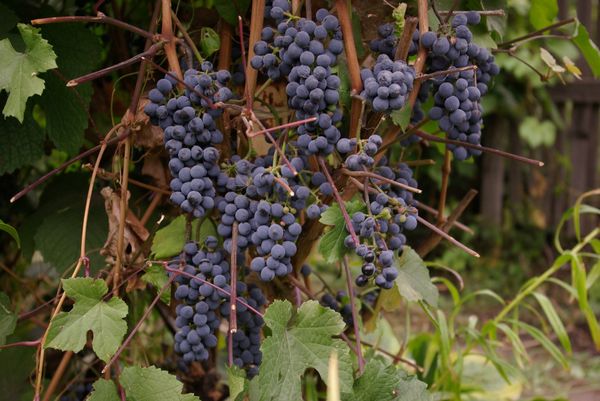Culture is considered one of the most valuable for the preparation of Georgian wine. The name translated into Russian means "paint." The main cultivation area is Kakheti. Saperavi grapes - a hybrid, perfectly take root in cold climates.
Table of contents
Description of a variety of grapes Saperavi
Bushes according to the description of average growth, foliage light, with the edges turned up, five-blade. Flowers bisexual. The brush is wide, conical in shape, it reaches seventeen centimeters in length and weighs about one hundred grams. The gracious leg is not woody, its length is four to four and a half centimeters.
Grape plant attributed to late varieties, full maturity occurs after five and a half months from the date of the dissolution of the kidneys. It is capable of producing crops. up to 110 centners per hectare.
The most successful harvests can be obtained on warm, fluffy soils illuminated by the sun and when organizing irrigation. Best of all, Saperavi is cultivated in the Black Sea basin. It is cultivated in the regions of Ukraine, Bulgaria, Moldova, Russia, Uzbekistan and Azerbaijan.
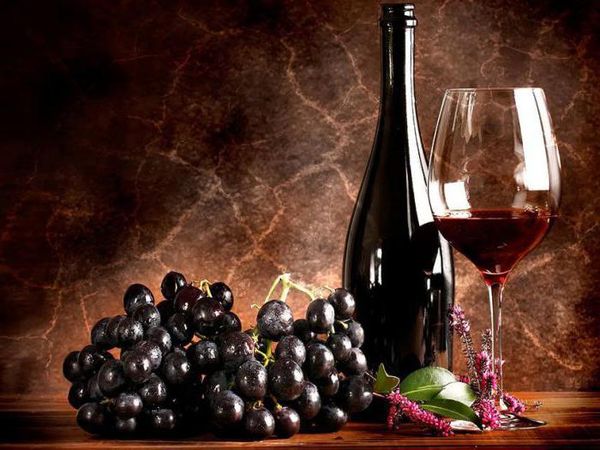
Ripe shoots reach eighty percent of the total. At the same time, from sixty to eighty percent can bear fruit.
The average age of the vines reaches two - two and a half decades. Ripe berries begin to shoot in September. If you are late with the harvest, the fruit can quickly crumble to the ground.
Characteristics of berries
Fruits of a grade of Saperavi a northern dark blue shade, oval, are covered with a thin skin. They are thickly covered with white wax.The size of the berries are 1.8 by 1.7 cm.
The taste is fresh, juicy flesh is weakly colored. The presence of pigment in the berries is considered the main feature of the plant. Due to this, grape juice turns a light pink shade.
Contains berries from 17 to 21 percent sugar, sometimes this value comes to 26 - 28 percent. The acidity level is 7.8 - 12.6 grams per liter.
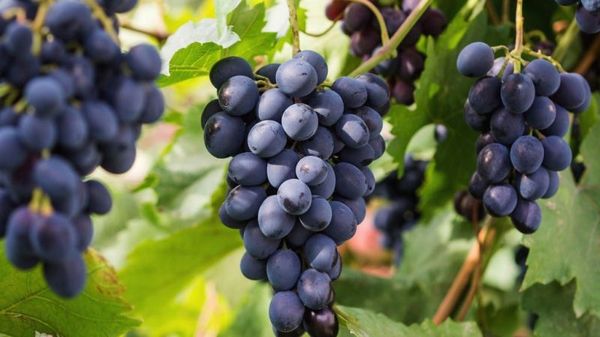
The advantages and disadvantages of the variety
The main advantages of culture are:
- high and stable yields;
- resistance to frost winters;
- a mature brush can remain on the vine for a month without losing its taste.
Known variety and its negative qualities:
- he susceptible to fungal diseases;
- affected by oidium.
Landing
In the southern regions, where the soil does not freeze even in the winter season, grapes are planted from October to March. In other places this is done in spring, when the soil is warm enough. Landing is carried out according to the scheme 1.5 by 2.5 meters.
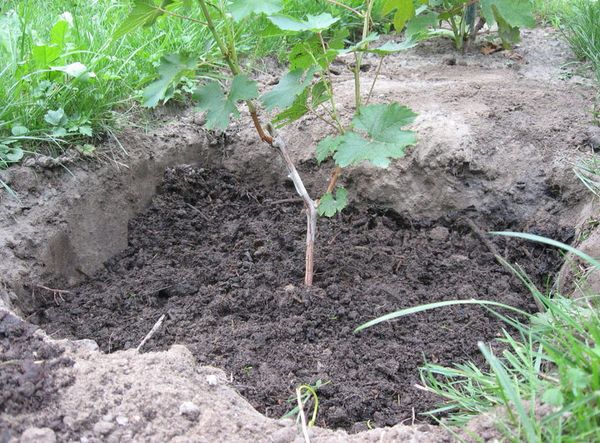
The plot should be properly prepared, taking into account some features.Culture will feel great on the sunny side, in other places berries can sour from a lack of sunlight. In addition, the place for landing should have good security from drafts.
The acidity level of the soil should be 6 - 7, and in this case, excellent yields are guaranteed. In addition, it is necessary to build a good drainage, so that the moisture does not stagnate, having a detrimental effect on the root system.
Planting seedlings completed irrigation and mulching of the earth.
Care for a young and mature vine
Excellent yields from Saperavi can be achieved on illuminated and well warmed places. For the steppe areas, experts advise sticking to the load on one bush in fifty - sixty eyes.
Pruning shoots held on the tenth - twelfth eye. For areas with conditional covering viticulture, gardeners recommend shtaby up to 1.2 meters with an area for food equal to 3 to 2 meters.
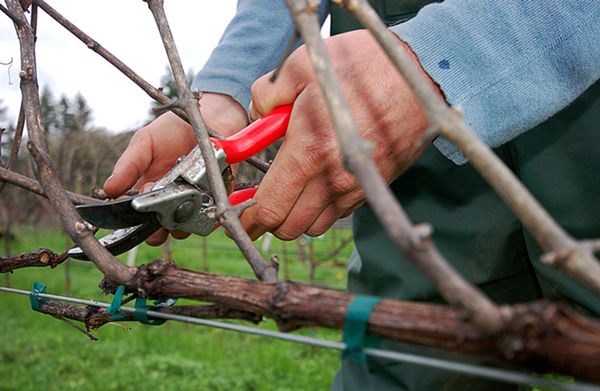
In dry weather, grape seedlings will have to be constantly watered, giving each bush 20-30 liters of water. Then pristvolnye circles mulch, which is best suited sawdust, pine branches or spruce.
The plant is considered to be frost-resistant, but in the first stage of growth it will have to be sheltered from the winter cold.
Best of all, this grape variety is grown on a trellis to create multi-sleeve fans.
Several times during the season you will have to make dressing compositions. It is best to use fertilizer mineral components for this purpose, containing potassium and phosphorus in sufficient quantities.
The plant, although it is considered to be frost-resistant, but when preparing it for the winter season, it is recommended to adhere to some rules that will help the bushes to winter. The root system suffers most from colds, so it is for it that the protective measures will have to be thought out.
Breeding methods
It is possible to plant this crop by saplings or graft on rootstocks of vigorous varieties.
Diseases and pests
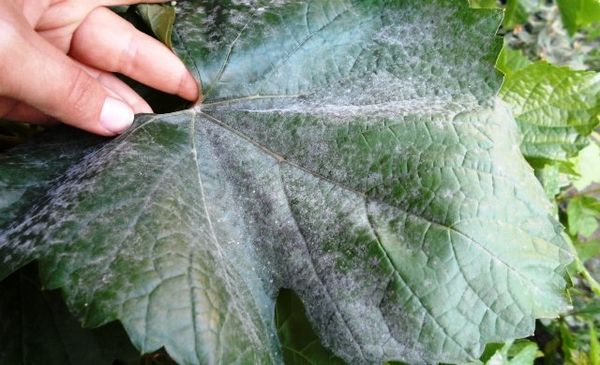
Most of all grape plants suffer from powdery mildewappearing under the influence of fungal infections. The main reason for such trouble is an excessively humid environment. The disease is recognized by a greyish-white bloom on the foliage and shoots.The formation of clusters begins to take place more slowly, the foliage twists and dries.
Berries due to fungus begin to crack and fall off. To cope with the disease, you should promptly remove the clusters and foliage that have traces of infection.
Troubles delivers and gray rot. A bloom appears on the plant that looks like ordinary dust. To prevent such troubles, it is recommended to spray the fungicide formulations.
A distinctive feature of the wine made from Saperavi grapes is the saturation of the ruby color and viscosity. Having organized the care required by the plant, it can be grown without problems in your backyard.
